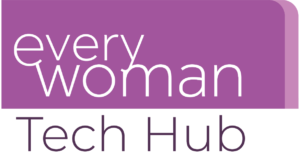
Imperial College London’s Bouquette Kabatepe’s ambition is for a world where everyone has automatic accessibility to digital spaces—from consumer websites and apps to job application sites. As Digital Accessibility Officer, she ensures that digital environments are fit for use by the university’s 8,000 strong staff and 21,000+ students, removing barriers to opportunity, talent and learning for all.
What is Digital Accessibility and why is it so important?
Digital Accessibility is all about lifting barriers to technology usage. It’s about creating digital content and systems and solutions that are equally easy to use by all, whether those individuals have additional needs or not. At its heart, it means all users have the same experience, so everybody’s interaction is meaningful and equal. Everyone benefits when a website or app is intuitive, easy to use, read, or share, and that means considering everyone’s needs in detail. In the UK, 24% of people have a disability, but it’s important to remember that our needs change throughout life, too; in fact, 83% of people who have a disability develop it during their working life.[1] We are simply not aware of the many challenges facing others sometimes until we begin to experience them ourselves or know someone close to us who is experiencing them.
How important has the business case for digital accessibility been in moving the issue forward?
Businesses are starting to ‘wake up’ to what we call the ‘purple pound’, that is, the potential spending power of disabled people and their families. So, if you’re not considering digital accessibility out of the need to do the right thing, do it for the business case, which says that £ 2 billion is spent yearly by people with additional needs.[2] If you’re selling flights, for example, and your website isn’t accessible, these people cannot book and will not buy from you. That reasoning has brought many companies into the digital accessibility world a bit faster. Another issue they are ‘waking up to’ is the untapped talent out there and that you can’t take advantage of talented people, if you can’t connect with talented people. We’re all struggling currently to secure the right talent, particularly in tech, and if you do not include people with physical or non-visible disabilities, then you are dismissing one in five people—and that’s a lot of potential talent to be missing out on. If we don’t build virtual ‘ramps’ onto our websites, we will exclude many people who won’t be able to apply to or buy from us.
How did your career lead you to this role and why were you keen to take it up?
From childhood, my catchphrase was ‘this is not fair’. I was that child who spoke out for those who were being excluded, and this was before the days of digital accessibility being a thing; I was always keen on making things more user-friendly for people. I have a degree in economics and politics and have lived and worked in Turkey, Austria, Russia, and the UK and in roles from account management to sales. I have also worked in project management and mid- to top-management roles for non-government organisations and have been involved in campaigning. My experience was that competitive industries aren’t always equal or inclusive, so I moved to the third sector, which I felt aligned more with my personal values.
What does your role entail now?
My job is to coordinate efforts to ensure accessibility compliance and promote inclusivity in both digital and physical spaces at Imperial. My role involves policy and risk management, raising accessibility awareness, digital accessibility compliance approvals, stakeholder engagement and providing advice and support on accessibility compliance. In 2018, accessibility legislation came into power in the UK for public sector bodies. Now, everything we develop in-house must be made accessible, as does everything we purchase from an external vendor—from a small piece of tech that affects 40 people up to an enterprise resource planning (ERP) project that will affect thousands of staff and students. I basically grill vendors and make sure they work with our accessibility guidelines. We are all in the digital world together, so there are no excuses for anyone to fall short of delivering.
What impact has digital accessibility created at Imperial College London?
Higher awareness of the subject is helping to ensure all our platforms are seamless, easy to use and accessible to all. I engage with various people around the university daily, and we have moved to a new level since the pandemic. We’ve gone from staff saying, ‘I have no idea what digital accessibility is’ to ‘I know I have to make this accessible; I just don’t know how’, which is a great cultural shift and one that is helping us move closer to our inclusivity and diversity ambitions. We are also working towards building up a large ally base, which is essential. Putting processes and practices in place is one thing, but bigger milestones can only be achieved with many people implementing these good practices across the university and asking the right questions at critical stages.
What is important to remember around increasing digital accessibility?
Not every disability is visible. People who have colour blindness, for example, don’t look like they have additional needs. Some people may have cognitive challenges such as anxiety or a neurodiverse condition. Digital accessibility should not be a ‘nice to have’ or a ‘bolt-on’. For example, when you see application forms that say, ‘please let us know if you have additional needs,’ it sounds nice and welcoming. But what if everything were already accessible, and they didn’t have to mention that at all? What if all your systems are screen-reader-friendly and all your content is created in that way already? What if all your meetings are created in such a way that the closed captions are enabled? Or there is a possibility of clicking a button and then having British Sign Language featured somewhere. In that way, nobody needs to declare they have additional needs, and we take this burden off them.
How will digital accessibility evolve?
There are now automated testing tools that you simply download onto the webpage you’re visiting, and they find the obvious shortfalls in the code. But artificial intelligence looks set to change things even more, and I’m excited about that. Until AI, we could only test usability by having a person carry out a series of checks on the page—what if we can bypass all that manual work and use AI to tell us how to create a document so it’s fully accessible. Soon, we won’t have to know technical stuff about the semantics or coding of digital environments; we will be able to take a piece of content and tell AI to create it in an accessible format, for example.
What is the most important thing to be able to successfully create wider inclusive digital environments?
Legislation and policies are one thing; however, even the strongest legislation isn’t enough if we don’t also live by the principles we’re trying to instil in the technology. Without all the human behaviours required to back up the legislation, digital accessibility will remain a tick-box exercise. We need ongoing awareness raising to create more and more allies who will ask the right questions. The first step is to normalise additional needs and not be afraid to embrace different abilities. It’s important to note that people are disabled by barriers, whether digital or physical, not by a medical definition.
More information on Bouquette Kabatepe’s work at ICL:
- Spotlight on Bouquette Kabatepe, Digital Accessibility Officer
- Bouquette Kabatepe, Digital Accessibility Officer, ICT
[1] House of Commons Library: UK disability statistics: Prevalence and life experiences – House of Commons Library (parliament.uk)UK disability statistics: Prevalence and life experiences – House of Commons Library (parliament.uk) Statistics correct at the time of publishing.
[2] UK.Gov: High street could be boosted by £212 billion ‘purple pound’ by attracting disabled people and their families – GOV.UK (www.gov.uk) and Wear Purple Charity: The Purple Pound – Infographic – Purple (wearepurple.org.uk) Statistics correct at the time of publishing.



